
The June 2014 Australian Edge/Canadian Edge/Utility Forecaster online web chat was postponed by a week due to an unexpected medical emergency for my Golden Retriever.
Participation was still robust, thanks to a highly engaged group of readers.
Utility stocks set the pace for the broader market over the first six months of 2014, as fears of rising interest rates abated and companies produced solid first-quarter financial and operating numbers.
Second-quarter reporting season will get underway later in July, with most management teams posting results in early August.
There's also been significant mergers-and-acquisitions rumor and activity, notably surrounding the telecom space. And Wisconsin Energy Corp (NYSE: WEC) last week announced a deal to buy UF Portfolio Holding Integrys Energy Group Inc (NYSE: TEG) for $9.1 billion in cash, stock and assumed debt.
Canadian stocks are back to their winning ways thus far in 2014, with the S&P/TSX Composite Index posting a 12.5 percent total return in US dollar terms from Dec. 31, 2013, through June 30, 2014. The S&P 500 Index is up 7.1 percent, the MSCI World Index 6.6 percent.
The loonie, meanwhile, was strong in June, bouncing back to near USD0.94 and having an essentially neutral impact for US-based investors' returns for the first six months of the year.
The Australia dollar pushed out to an eight-month high earlier this week, as Chinese PMI data showed some stabilization in the economy for that key trading partner. Although iron ore prices remain depressed, several LNG projects coming on line in coming months should give a boost to Australian exports.
Aussie strength has had a clear positive impact for US-based investors who are long Australian stocks. The S&P/ASX 200 Index trailed the S&P 500 and the MSCI World Index with a 3 percent return in local terms. Accounting for the impact of a stronger ! aussie on US investors' holdings, the S&P/ASX was up 8.8 percent from Dec. 31, 2013, through June 30, 2014.
Here are highlights in the form of a slightly edited transcript from the July 2 "June" AE/CE/UF Online Chat.
Question: Hello, David, I hope you're enjoying the summer. I have two questions. First, your take on the Wisconsin Energy acquisition of Integrys. I have positions in both, and I'm glad to receive more Wisconsin Energy stock.
Interestingly I did the math and discovered that if I used the cash portion of the proceeds to buy more Wisconsin Energy, my total dividends that I had been receiving from Integrys would actually decline by a few dollars at Wisconsin Energy's current dividend rate.
Do you see a good potential for Wisconsin Energy to raise its dividend after the merger?
Second, your thoughts on Consolidated Communications Holding Inc (NSDQ: CNSL). I have a large position with an average cost of under 16. Thanks, UF!
Of course I'm very happy with the dividend since my yield on cost is about 10 percent. However, with the stock at the highest level I've seen, is it a good idea to take some off the table? I don't want to sell if the dividend is secure since I don't have any good prospects to replace it with an equivalent, relatively safe yield.
Is there any reasonable prospect of a dividend increase, in your opinion? Thanks.
Answer: I like Wisconsin Energy's move for Integrys and will likely add Wisconsin Energy to the UF Portfolio. Wisconsin Energy is a well-run utility. Adding Integrys, with geographically proximate Midwest asset, increases scale and will result in a company with 60 percent ownership in the FERC-regulated American Transmission Company.
Wisconsin Energy reiterated its commitment to 7 percent to 8 percent annual dividend growth with a target payout ratio of 65 percent to 70 percent.
I think it’s a good deal for Integrys shareholders. And I think your observation about deployment ! of the ca! sh component is a wise one, as, again, we will very likely add Wisconsin to the portfolio in the August issue.
I have Integrys rated a hold pending completion of the merger. The stock has come back a bit, and there could be an arbitrage opportunity for traders. For longer-term buy-and-hold investors Wisconsin Energy is a good choice at these levels.
I think the best hope for Consolidated Communications is dividend sustainability, which at these levels is, in my view, a strong positive.
Thanks for the good wishes. I hope you’re enjoying the summer as well.
Question: What happened to your Golden Retriever?
Answer: Thank you for asking. He had an obstruction in his small intestine that led to the organ becoming 90 percent necrotic. We had to put him down.
Question: What are your three best stocks today for growth with income?
Answer: I like Apple Inc (NSDQ: AAPL) for growth plus income as well as NextEra Energy Inc (NYSE: NEE) and ARC Resources Ltd (TSX: ARX, OTC: AETUF).
Question: Please share your thoughts on Parkland Fuel Corp (TSX: PKI, OTC: PKIUF) and Crescent Point Energy Corp (TSX: CPG, OTC: CSCTF) regarding the recent run-up (especially in energy) in stock prices and future investment in both companies. Thank you.
Answer: I continue to rate Crescent Point a buy up to USD48. I’m thrilled with the run the stock has made, even more so by the company’s ability to grow production per share on a consistent basis.
Parkland’s rebound looks like it’s tiring out a bit. But the business is in good shape, and management has been able to grow the business by making acretive deals for smaller fuel distribution companies. Earnings are visible and the dividend is stable.
Question: Hello again David! Do you think APA Group (ASX: APA, OTC: APAJF) is a good enough stock to benefit from “the floating pipeline” in Australia? Appreciate your chat.
Answer: I like APA because it’s the dominant nat! ural gas ! infrastructure company in Australia, offering visible earnings, cash flow and dividend growth. I’m not sure yet of any specific benefits it will realize through the potential construction of the proposed Woodside Petroleum Ltd (ASX: WPL OTC: WOPEF, ADR: WOPEY)/Royal Dutch Shell Plc (London: RDSA, NYSE: RDS/A) floating LNG project at this stage.
Question: Hi. What do you think about Williams Companies (NYSE: WMB) and ONEOK Inc (NYSE: OKE)? They both seem to be increasing their dividends.
Answer: Williams just completed a big deal for Access Midstream Partners LP that will add to cash flow and provide more room for dividend growth. Part of the deal in fact includes a 32 percent payout increase. This is a classic invest-to-grow story. I like Williams under 60.
ONEOK is now a pure-play general partner, its asset being a 41 percent interest in ONEOK Partners LP (NYSE: OKS) and its gathering/processing/transporting assets from key US gas-producing fields. Management has guided to solid dividend growth for the next half-decade. I like ONEOK on dips to 66.
Question: Dave, any thoughts on NextEra Energy Partners LP (NYSE: NEP)? And, if you can build on that, maybe talk about how to approach an initial public offering (IPO) in general. Thanks.
Answer: I like that NextEra Energy Partners' 10 renewable generation projects are operating under long-term power purchase agreements, which provides a high level of cash-flow certainty.
IPOs are tough for regular retail investors who don’t have very large accounts with brokerages participating in the underwriting process. I'd wait to see if management’s forecasts for financial and operating performance bear out and for the share price to settle a bit and for the "yieldco" spinout from NextEra Energy Inc to establish a bit of trading history.
Question: What are your newest, best conservative stocks?
Answer: I like Northeast Utilities (NYSE: NU), Brookfield Renewable Energy Partners LP (TSX: BEP-U, N! YSE: BEP)! , Pembina Pipeline Corp (TSX: PPL, NYSE: PBA), Xcel Energy Inc (NYSE: XEL) and NiSource Inc (NYSE: NI).
Question: What is your current analysis on Brookfield Real Estate Services Inc (TSX: BRE, OTC: BREUF) and Liquor Stores NA Ltd (TSX: LIQ, OTC: LQSIF)?
Answer: Liquor Stores’ first-quarter payout ratio was negative, which raises some questions about dividend safety as we await second-quarter numbers, as overall sales growth was tepid and same-store sales actually declined.
Margin shrank as the company’s turnaround plan led to higher costs. This is an aggressive play on management’s ability to execute in a tough operating environment, with particular pressure in its US operations in Kentucky. I still rate it a buy under USD14, but it’s for aggressive investors.
Brookfield Real Estate Services is a simple story with continuing support from a still-strong, still-stable Canadian housing market. There’s not a lot of upside to be had because of the way its business is structured. But the dividend is consistent and supported by cash flow.
Question: In today’s crazy market, what five socks would you pick for growth that would have downside protection?
Answer: Based on your parameters I would pick TransCanada Corp (TSX: TRP, NYSE: TRP), Verizon Communications Inc (NYSE: VZ), NextEra Energy Inc, ONEOK Inc and Chevron Corp (NYSE: CVX).
Question: I own Pembina Pipeline, Parkland Fuel, Enerplus Corp (TSX: ERF, NYSE: ERF), Crescent Point and Baytex Energy Corp (TSX: BTE, NYSE: BTE). All of the securities are in one of your CE Portfolio Conservative or Aggressive holdings except Baytex.
Do you feel there are better plays in the energy patch besides Baytex, which I've owned since late 2008?
Answer: Baytex has done extremely well over the past few months as a stock, and management recently boosted the dividend by 9.1 percent. I rate it a buy under 46, so it’s not as if I don’t like it.
We have six oil and! gas prod! ucers in the CE Portfolio, five of which have been consistent performers, with the sixth in the midst of what appears thus far to be a promising turnaround.
But Baytex’ “omission” from the Portfolio should not be viewed in a negative light.
Question: What is your projection on natural gas prices?
Answer: Production in the US will continue to grow, while demand should rise with the EPA’s new rule on GHG emissions that will encourage the switch to cleaner-burning fuels from coal-fired power. Exports of gas via LNG terminals will also have an impact.
I don’t see gas going back to the $2 neighborhood we saw in 2012. Nor do I see it hitting double digits anytime soon. Weather will impact prices on a seasonal basis, but regular trading zone between $3.50 and $4.50 for the next couple years seems reasonable.
But please don’t quote me on that. There are a lot of variables in play.
Question: Your thoughts on Keyera Corp (TSX: KEY, OTC: KEYUF)?
Answer: I think Keyera is a great company, with great gas and NGLs midstream assets and a solid record of execution. And it has one of the best-looking five-year stock charts you’ll ever see.
Consistent dividend growth is supported by fee-for-service assets. It's a tremendous long-term holding.
Question: Chevron or Exxon Mobil Corp (NYSE: XOM)? Or both?
I guess I’d like to know which company’s LNG prospects impress you more. I was reading an article about Chevorn's Gorgon project in particular; they’ve spent tons of dough on capital expenditures.
Answer: Chevron was the June 2014 Growth Spotlight in Utility Forecaster, which means it was my top “growth” pick for new money right then.
LNG projects in general are notorious for cost blowouts, so the Gorgon situation is not unusual. We should start to see meaningful production growth in the second half of 2014 and into 2015 from its LNG projects and its unconventional US plays.!
! Exxon Mobil also offers compelling long-term growth prospects. I’m excited by the PNG LNG project, which it operates and which has actually been one of the anomalies: cost blowouts have been relatively modest, and production targets have been exceeded. It’s not a Portfolio Holding, but I do rate Exxon Mobil a buy under 107.
Question: Are there plans for NextEra Energy Partners to pay a dividend? If so, when, and how much will it pay?
Answer: NextEra Energy Partners expects to pay a quarterly dividend of $0.1875 per share, which is $0.75 annualized and about a 2.2 percent yield based on the current share price of $34.77 (as of July 2, 2014). NextEnera Energy will retain an 83 percent stake in the offshoot. I don’t have information about ex-dividend, record or pay dates yet.
Question: Is this a good entry point for BHP Billiton Ltd (ASX: BHP, NYSE: BHP), and do you like the mining/iron ore prospects in the next year or two?
Answer: I rate BHP Billiton a buy under USD40 on the Australian Securities Exchange (ASX) and under USD80 on the New York Stock Exchange (NYSE). (The NYSE listing is an American Depositary Receipt that represents two ASX-listed shares.)
Iron ore is going to be tough for small producers without sufficient scale to offset the steep price decline for the steel input. BHP does have scale and one of the lowest-cost operations in the world.
Management has been cutting costs aggressively, scaling back expansion projects and otherwise trimming its sales in the aftermath of an aggressive expansion during the resource boom led by now-departed management.
Question: What are your thoughts on Exelon Corp's (NYSE: EXC) buyout of Pepco Holdings Inc (NYSE: PHI)?
Answer: It’s going to expand Exelon’s regulated operations, which is a good thing. And Pepco Holdings has been executing on a turnaround plan, with regulatory relations much improved.
It’ll be interesting to see whether nuclear can make a comeback ami! d the EPA! ’s new GHG rules for existing plants. It’s not clear yet whether this will transpire.
But the addition of geographically similar regulated utility operations is a definite positive. And the 2014 rebound for wholesale power prices is good too. It remains to be seen whether this is a durable trend or a weather-influenced phenomenon.
Question: David, are you impressed with Linn Energy LLC (NSDQ: LINE) and its progress since the Barron’s crash?
Answer: Yes. Management has taken steps to address a questionable production growth profile. And the unit price has clearly rebounded well.
I exited because of the uncertainty surrounding the Berry Petroleum acquisition and the potential drag of an SEC investigation.
There are other producers that pay solid dividends that I still like more, Enerplus, for example, that involve far less volatility.
Question: What about Enerplus? I owned it a few years ago and then sold when it lost steam. Do you think it has a way to go? Thanks.
Answer: Enerplus is a textbook example of management making the most of an unfortunate dividend cut, putting the savings to work to make the operation more efficient and getting back to production growth.
The stock price has been on a great run since mid/late 2012. And the production growth profile suggests good things ahead.
Question: Any thoughts on Covanta Holding Corp (NYSE CVA)? It's not a utility, but its business is utility-like.
Answer: I like Covanta, which, as you note, does a lot of utility-like things, including waste disposal and waste-to-energy. Management recently announced a healthy 39 percent dividend increase and is cutting costs as well. I rate it a buy under 22.
Question: David, any takeaway regarding Duke Energy Corp's (NYSE: DUK) 1.9 percent dividend? It seems tepid to me.
Answer: The magnitude of the increase is basically in line with the 1.96 percent increase announced around this time a year ago.
We’re still awaitin! g word on! what Duke’s ultimate liability will be for the coal-ash spill on the Dan River. But I don’t read too much into this increase. Consistent is better than big, I think.
Now, we’ll see what second-quarter results say about the underlying business, but this increase is generally in keeping with the recent trend.
Question: I notice that you have ConocoPhillips (NYSE: COP) as a "4" under the UF Safety Rating System with "hold" advice. Could you elaborate? Thanks.
Answer: As far as the majors that we follow go, including Chevon and Exxon Mobil, ConocoPhillips is trading at a steeper valuation right now after a parabolic run since early February.
At the same time, management’s target of 3 percent to 5 percent annual production growth to 2017 is well supported by US liquids, Asia-Pacific LNG and Canadian oil sands projects.
Question: Hi David, so sorry to hear about your dog. I know how hard that is. And thank you for taking the time to host this chat.
I hold positions in Canadian Apartment Properties REIT (TSX: CAR-U, OTC: CDPYF); Dream Office REIT (TSX: D-U, OTC: DRETF); RioCan REIT (TSX: REI-U, OTC: RIOCF); and Artis REIT (TSX: AX-U, OTC: ARESF). I’m a little concerned about Dream Office, as it's seen a significant decline in value.
What's your forecast for Canadian REITS going forward? Also, can you please comment on my old nemesis Penn West Petroleum Ltd (TSX: PWT, NYSE: PWE)? I’ve held this tock for a long time; it's seen a nice run-up recently. Where do you think it might go from here? Thanks.
Answer: Thank you.
The July In Focus feature for Canadian Edge will be devoted to Canadian REITs, including Dream Office, the new name for Dundee REIT.
The unit price has settled into a range following the steep slide last spring/summer. And first-quarter numbers were decent. But other Canadian REITs, including Canadian Apartment Properties and Artis, have clearly responded much better. I’ll have mor! e next Fr! iday, July 11, when the July CE is published.
Penn West management is getting good results so far in its turnaround plan. Production was down in the first quarter, but so were costs. And the share price has been on a solid uptrend since late January 2014. Second-quarter numbers, which will be released on or about Aug. 8, will of course be critical.
Question: I like the H2O business. I've owned American Water Works Co Inc (NYSE: AWK) for eons. Is there any compelling reason to own more than one water utility? At what point does is there no marginal benefit added? I do like Connecticut Water Service Inc (NSDQ: CTWS) and York Water Co (NSDQ: YORW) as slow, consistent growers.
As Ben Franklin said, "Little strokes fell great oaks."
Answer: We do have three in the UF Portfolio, including American Water Works, Connecticut Water Service and Aqua America Inc (NYSE: WTR), with the basic rationale rooted in geographic diversification.
Question: What's your outlook for Alliant Energy Corp (NYSE: LNT)?
Answer: I rate Alliant Energy a buy under 57. It’s pushed out a little beyond that right now.
The Midwest service territory is holding up well economically, and regulatory relations are solid. It benefitted, like a lot of utilities, from an abnormally cold weather. Longer-term growth is supported by infrastructure investment.
Dividend growth forecasts from management do exceed the industry average.
Question: Your latest thoughts on Lightstream Resources Ltd (TSX: LTS, OTC: LSTMF)?
Answer: Lightstream has backed off a 12-month high in recent days, as oil prices have retreated along with easing tensions in Iraq. But management continues to make progress in its plan to sell non-core assets to generate funds to pay down debt.
Still at issue is whether it can maintain sufficient production to support the dividend rate while selling assets. But first-quarter results were basically encouraging. Management will report second-quarter results on ! or about ! Aug. 7.
I continue to rate it a buy under USD8. It’s about USD7.64 as of this writing (midday July 9, 2014).
Question: What's your forward-looking opinion of Canadian railroads considering they've had a good run up already this year?
Answer: Both Canadian National Railway Co (TSX: CNR, NYSE: CNI) and Canadian Pacific Railway Ltd (TSX: CP, NYSE: CP) have shown solid volume trends in recent weeks. I think there’s more upside from here, though, I do rate them “holds.”
Question: The market is hitting is hitting new highs and seems somewhat frothy. What's your perspective on rest of 2014?
Answer: I focus almost exclusively on buy-under targets for individual companies. We have had a nice run, and different valuation metrics and/or market forecasters will tell you different things about whether we’re overbought and heading for correction/crash.
I find a lot of these discussions, which tend to focus on single variables amid a system with incalculable inputs, to be overly simplistic. My primary concern right now is how second-quarter financial and operating numbers look for Portfolio and coverage universe companies.
Generally speaking, however, market history shows that new highs are a good thing.
Question: What are the differences among Enbridge Income Fund Holdings Inc (TSX: ENF, OTC: EBGUF), Enbridge Energy Partners LP (NYSE: EEP), Enbridge Inc (TSX: ENB, NYSE: ENB) and Enbridge Energy Management LLC (NYSE: EEQ)?
Which one has less US reliance? And which two will be helped the most by the Northern Gateway pipeline? Thanks, and sorry about your dog…that's a hard thing.
Answer: Enbridge Income Fund Holdings is focused entirely on Canadian assets. Enbridge Energy Partners has some Canadian exposure.
Enbridge Inc has extensive operations on both sides of the border and around the world. And right now it's is the only one that has equity interest in the Northern Gateway pipeline.
And thanks. It is. He w! ould be s! itting right under me right now. And he would have been six years old tomorrow.
Question: Your latest thoughts on Medical Facilities Corp (TSX: DR, OTC: MFCSF)?
Answer: Medical Facilities had a soft first quarter, with revenue flat and income down double digits. But its surgical centers are located in decent areas from an economic perspective. And an uptick in insurance coverage should help support demand over the long term.
I like it under USD14, though it’s trading well above that level right now. Second-quarter numbers will be out sometime in mid-August.
Question: What are your five favorite stocks in Canada for growth with a reliably growing dividend?
Answer: I like Vermilion Energy Inc (TSX: VET, NYSE: VET), Bank of Nova Scotia (TSX: BNS, NYSE: BNS), Brookfield Renewable Energy Partners LP (TSX: BEP-U, NYSE: BEP), Pembina Pipeline and AltaGas Ltd (TSX: ALA, OTC: ATGFF).
Question: If I’m relying on dividends for income, does it make sense to sell some or all shares because the price went up 50 percent, Buckeye Partners LP (NYSE: BPL) for example?
Answer: I think you’re on the right track. If a stock has appreciated to the point that it accounts for an excessive portion of your total assets it may make sense to take some profit and reallocate.
Question: Thanks for these excellent web chats. What are your two or three "franchise" equities in your portfolios for the next three-plus years?
Answer: NextEra Energy Inc, Verizon Communications and Northeast Utilities are three solid building blocks for anyone, anywhere, anytime.
And thanks for the compliment.
Question: Hi, Dave. Thanks for the chat! Are you still positive on Consolidated Water Co Ltd's (NSDQ: CWCO) and Verizon's long, long term prospects?
Answer: I'm very bullish on Verizon, as the consolidation of Verizon Wireless ownership is a big, smart deal that requires little integration costs and exposes it to still-exploding data demand from wirele! ss device! users.
I like the Consolidated Water story more than I like recent results. But water is precious. And finding new ways to produce it is a good business for the next several decades. Its project in Rosarito, Mexico, should provide an earnings boost.
Question: Finally, and then I have to go–thanks for doing this, by the way. What's the most exciting technological change underway in energy today?
The environmental lobby targets fracking and oil sands. If you were to sit down with, say, a 21 year-old, well-intentioned/change the world/placard-carrying college student and talk about fracking and oil sands, what would you say to that person to change his attitude towards both fracking and oil sands? Thanks.
Answer: I think rooftop solar and distributed energy is a potentially game-changing development that will unfold over decades, like the wireless revolution in telecom.
I would tell your young idealist, as I’ve told the chief of staff to Senator Tim Kaine, that the vast majority of GHG emissions still come at the end-use stage versus the production stage, that natural gas production is a key element of meeting the new EPA target and we won’t get there without fracking, and that raising energy costs invariably and disproportionately hurt the poor and less-well-off.
It’s my pleasure, thanks for being here.
Question: David, where do you go for your research? Care to share your information hubs? Do you have an opinion on the Seeking Alpha website?
Answer: I read a lot of 10-Ks and 10-Qs and equivalent filings from Canadian and Australian companies, conference call transcripts and a handful of brokerage research reports. It’s basically from-the-source reading.
I also read a lot of official stuff from the Fed, the Bank of Canada, the Reserve Bank of Australia and other government and quasi-government agencies such as the IMF, the World Bank, the OECD, Statistics Canada, the Australian Bureau of Statistics and the Energy I! nformatio! n Administration.
Question: What's your medium- and long-term outlook for El Paso Pipeline Partners LP (NYSE: EPB), Energy Transfer Partners LP (NYSE: ETP) and Spectra Energy Partners LP (NYSE: SEP)? If you had to choose one for the long term, which one would it be?
Answer: Just one? Energy Transfer Partners, although Spectra Energy Partners does benefit from its parent Spectra Energy Corp's (NYSE: SE) aggressive dropdown program and will see its asset base grow substantially in coming years.
El Paso Pipeline Partners fell out of favor in early 2014 due to underwhelming distribution growth guidance from management. But growth should resume in 2015.
Question: In the July Utility Forecaster both NRG Energy Inc (NYSE: NRG) and AES Corp (NYSE: AES) receive a good discussion of why their numbers have been low, and yet the underlying themes for both appear have good outlooks going forward.
Although I think I understand the information provided in the article, I don't understand why either would merit consideration for purchasing by an income driven investor, particularly since the dividends are low for utilities.
Rather, both companies look as if they might be good investments if purchasing for capital gains, rather than ongoing income.
Would you be able to explain why they make the “Aggressive Holdings” list? Thanks in advance.
Answer: I think your comment captures why we hold them in the Growth Portfolio Aggressive Holdings. UF is first and foremost an income-oriented publication. But I believe there’s room for recommendations across what is definitely a more limited risk spectrum within that context.
Growth Portfolio Aggressive Holdings are “growth-with-income” stories with some exposure to the economic cycle. Core Holdings are income-with-growth.
The Income Portfolio Conservative Holdings provide fixed income for the most risk-averse. The Income Aggressive Holdings have substantial income supported by regu! lated or ! fee-based revenue, high cash-flow visibility.
Question: Any near-term plans to raise the buy point on Spectra Energy Partners? It's been well above 45 for quite some time. I really like the stock, and I'm itching to buy but do not want to exceed your target.
Answer: Increases to buy-under targets are generally made based on dividend growth or asset growth. We will be taking time in coming weeks to evaluate where we are with the entire coverage universe.
I don’t mean to indicate that we will raise it, as the stock has been on a rocket ride since late 2012. We want to be sure that assets and cash flow support the valuation.
Question: Do you see continued upside for Magellan Midstream Partners LP (NYSE: MMP)?
Answer: I like Magellan Midstream's crude oil exposure, and I love that the GP takes no incentive distribution rights, meaning LP unitholders receive 100 percent of distributable cash flow.
Yes on the fundamentals, yes on unitholder friendly, cautious from a valuation perspective at these levels. I have it rated a buy under 76 right now.
Question: How do you rate AT&T Inc (NYSE: T) compared to Verizon?
Answer: I'm actually a satisfied AT&T wireless subscriber, with five devices across the family connected. I think the DirecTV (NYSE: DTV) deal will provide a boost to growth.
I think it and Verizon will continue to dominate the US market. I like the yield and the consistent divided growth. I rate AT&T a buy under 35.
I do like Verizon’s “big deal” to consolidate Verizon Wireless ownership versus AT&T’s move for DirecTV.
I don’t think, from a portfolio perspective, that they’re mutually exclusive.
Question: What are your thoughts on Energy Transfer Equity LP (NYSE: ETE) and Energy Transfer Partners?
Answer: Great set of fee-generating assets, great growth profile supported by new large-scale pipeline projects.
If I have a preference it’s for Ene! rgy Trans! fer Partners' 6 percent-plus yield versus Energy Transfer Equity's 2.5 percent.
Question: David, just one more question. What's your outlook for Atlantic Power Corp (TSX: ATP, NYSE: AT)? It seems to be rebounding a bit. Thanks.
Answer: I think Atlantic Power is rebounding because management is evaluating strategic alternatives that could include asset sales or perhaps an outright takeover by a larger, better-capitalized company. The latter is the best outcome, in my view.
Question: What stocks and/or mutual funds would you hold indefinitely for dividend growth and capital appreciation?
Answer: When I add a stock to an AE, CE or UF Portfolio it’s with the intention of buying and holding indefinitely. So any Holding that’s buy-rated and trading below its buy-under target qualifies.
Question: No other questions, but I just want to say sorry about your dog. Hope you will get a new companion soon.
Answer: Thank you. We’re actually going to visit a farm where they breed Goldens tomorrow, which would have been Lemo’s sixth birthday. We’re not bringing a puppy home, but we will begin the process of filling the void.
Thanks, folks, for another great chat. And I appreciate all the thoughts on my dog.
We'll do it again on on Wednesday, July 30, 2014, at 2 pm ET, from the comfort of my deck overlooking the dune that separates, for one week a year, from the Atlantic Ocean.
 Bloomberg Fed Chair Janet Yellen
Bloomberg Fed Chair Janet Yellen 

 Popular Posts: 3 Chinese Stocks That Will Be Better Than AlibabaDuPont Paints Brighter Dividend – 13 Dividend Stocks Increasing PayoutsAlibaba IPO Date Influenced by Chinese Mysticism Recent Posts: DuPont Paints Brighter Dividend – 13 Dividend Stocks Increasing Payouts 3 Chinese Stocks That Will Be Better Than Alibaba Penske Sets the Pace for 10 Dividend Stocks Increasing Payouts View All Posts DuPont Paints Brighter Dividend – 13 Dividend Stocks Increasing Payouts
Popular Posts: 3 Chinese Stocks That Will Be Better Than AlibabaDuPont Paints Brighter Dividend – 13 Dividend Stocks Increasing PayoutsAlibaba IPO Date Influenced by Chinese Mysticism Recent Posts: DuPont Paints Brighter Dividend – 13 Dividend Stocks Increasing Payouts 3 Chinese Stocks That Will Be Better Than Alibaba Penske Sets the Pace for 10 Dividend Stocks Increasing Payouts View All Posts DuPont Paints Brighter Dividend – 13 Dividend Stocks Increasing Payouts  While DuPont was likely the highest-profile dividend stock brightening up shareholder portfolios this week, 12 other dividend stocks opted to refresh payouts, including candy maker Hershey (HSY), and oil and gas drilling services firm Nabors Industries (NBR).
While DuPont was likely the highest-profile dividend stock brightening up shareholder portfolios this week, 12 other dividend stocks opted to refresh payouts, including candy maker Hershey (HSY), and oil and gas drilling services firm Nabors Industries (NBR).
 Emerging market investors are keen to tap Saudi Arabia's stock market. ABU DHABI (CNNMoney) Get ready for the next big emerging market opportunity: Saudi Arabia.
Emerging market investors are keen to tap Saudi Arabia's stock market. ABU DHABI (CNNMoney) Get ready for the next big emerging market opportunity: Saudi Arabia.  Hasloo Group Production Studio/Shutterstock Historically, when Americans invested their money with a financial adviser, they wanted to walk into an office, shake hands and sit across the desk from the person they were entrusting their money to. There's something about looking a person in the eye that helps engender trust and confidence. But as technology improved and became ubiquitous, those sit-down meetings increasingly began to be replaced with phone calls, or sometimes just email exchanges. Now, a new generation of money management firms like Wealthfront, Betterment and Motif Investing is taking that concept a step farther, betting that today's investors will not even want to deal with a live adviser. Instead, their platforms are designed to allow you to invest your money with all the customized finesse that comes from having an adviser –- but without ever interacting with one. It's the dawn of the "robo-adviser," but whether you'll consider this innovation a good fit for you might depend on which side of the generational gap you fall on. Answer the Questions These robo-adviser firms customize their adviser-like investing services by asking customers a complex series of questions when they first open their accounts online. The tools, say proponents, can determine a client's risk profile and suggest asset allocations better than a human adviser can. And because the process is automated, it is extremely efficient, allowing these firms to offer their services -- and an increasingly complex set of investing tools -- at a very low cost. But the question you have to ask yourself -- before answering all their questions -- is, "Am I comfortable investing with an algorithm alone?" An algorithm, after all, simply takes a given set of information -- the data points in this case being your answers to series of questions -- and follows a set of clearly-defined steps to calculate a solution -- in this case, the answer to the question, "How should I in best invest my money?" At it's core, it's same process through which companies like Google (GOOG) figure out which ads to serve up to you, Amazon (AMZN) suggests books it thinks you will like, or Netflix (NFLX) reviews your previously viewed movies to determine other films you'll want to watch. Still, though algorithms have quietly become a pervasive part of our everyday lives, financial services has traditionally been a "high-touch" business -- one that demands plenty of personal interaction. But that's not as important to millennials, as technology has taken the place of face-to-face interaction, allowing even the business of dating to be transformed by sites like Match.com and apps like Tinder. Go for a Test Drive, With a Little Bit of Money For those in Generation X (or older), that may not be such an easy transition to make when it comes to your money. However, there is a simple way to determine if a robo-adviser is right for you. Test it out. Often, people look at investing as an all-or-nothing endeavor -- as if their capital has to go into either stocks or bonds, they have to be "in the market" or "on the sidelines," investing with an adviser or without one. But the same technology that gave birth to the robo-adviser gives you the ability to test-drive different investing products with a low initial investment. So if robo-advisers intrigue you, sample the concept with a small amount of your funds. There is no cost to open an account with a robo-adviser firm, and it can be done quickly and safely from your computer, with no obligation. Test out the tools and services that are offered. See if you like what they are doing with your investments, and if you are comfortable with the user experience. If you are, then you can move over as much, or as little, as you want. And if you don't think a robo-adviser is right for you after trying one out, you can close your account and take your money out with the click of a button. Company: Oracle Cash compensation: $5.5 million Stock and options: $90.7 million Total compensation 1-year change: 24% Despite his $1 salary, Ellison is not only the highest paid tech CEO this year, but the highest paid of all CEOs.
Hasloo Group Production Studio/Shutterstock Historically, when Americans invested their money with a financial adviser, they wanted to walk into an office, shake hands and sit across the desk from the person they were entrusting their money to. There's something about looking a person in the eye that helps engender trust and confidence. But as technology improved and became ubiquitous, those sit-down meetings increasingly began to be replaced with phone calls, or sometimes just email exchanges. Now, a new generation of money management firms like Wealthfront, Betterment and Motif Investing is taking that concept a step farther, betting that today's investors will not even want to deal with a live adviser. Instead, their platforms are designed to allow you to invest your money with all the customized finesse that comes from having an adviser –- but without ever interacting with one. It's the dawn of the "robo-adviser," but whether you'll consider this innovation a good fit for you might depend on which side of the generational gap you fall on. Answer the Questions These robo-adviser firms customize their adviser-like investing services by asking customers a complex series of questions when they first open their accounts online. The tools, say proponents, can determine a client's risk profile and suggest asset allocations better than a human adviser can. And because the process is automated, it is extremely efficient, allowing these firms to offer their services -- and an increasingly complex set of investing tools -- at a very low cost. But the question you have to ask yourself -- before answering all their questions -- is, "Am I comfortable investing with an algorithm alone?" An algorithm, after all, simply takes a given set of information -- the data points in this case being your answers to series of questions -- and follows a set of clearly-defined steps to calculate a solution -- in this case, the answer to the question, "How should I in best invest my money?" At it's core, it's same process through which companies like Google (GOOG) figure out which ads to serve up to you, Amazon (AMZN) suggests books it thinks you will like, or Netflix (NFLX) reviews your previously viewed movies to determine other films you'll want to watch. Still, though algorithms have quietly become a pervasive part of our everyday lives, financial services has traditionally been a "high-touch" business -- one that demands plenty of personal interaction. But that's not as important to millennials, as technology has taken the place of face-to-face interaction, allowing even the business of dating to be transformed by sites like Match.com and apps like Tinder. Go for a Test Drive, With a Little Bit of Money For those in Generation X (or older), that may not be such an easy transition to make when it comes to your money. However, there is a simple way to determine if a robo-adviser is right for you. Test it out. Often, people look at investing as an all-or-nothing endeavor -- as if their capital has to go into either stocks or bonds, they have to be "in the market" or "on the sidelines," investing with an adviser or without one. But the same technology that gave birth to the robo-adviser gives you the ability to test-drive different investing products with a low initial investment. So if robo-advisers intrigue you, sample the concept with a small amount of your funds. There is no cost to open an account with a robo-adviser firm, and it can be done quickly and safely from your computer, with no obligation. Test out the tools and services that are offered. See if you like what they are doing with your investments, and if you are comfortable with the user experience. If you are, then you can move over as much, or as little, as you want. And if you don't think a robo-adviser is right for you after trying one out, you can close your account and take your money out with the click of a button. Company: Oracle Cash compensation: $5.5 million Stock and options: $90.7 million Total compensation 1-year change: 24% Despite his $1 salary, Ellison is not only the highest paid tech CEO this year, but the highest paid of all CEOs. Related BNO Brent Near $108 Ahead Of Inventory Data Brent Steady With Geopolitical Tension In Focus Related DBE Geopolitical Tension Back In The Driver Seat For Crude Oil Prices Up On Chinese And U.S. Demand
Related BNO Brent Near $108 Ahead Of Inventory Data Brent Steady With Geopolitical Tension In Focus Related DBE Geopolitical Tension Back In The Driver Seat For Crude Oil Prices Up On Chinese And U.S. Demand 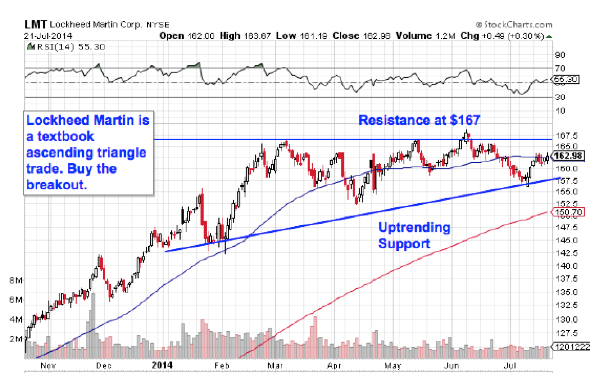
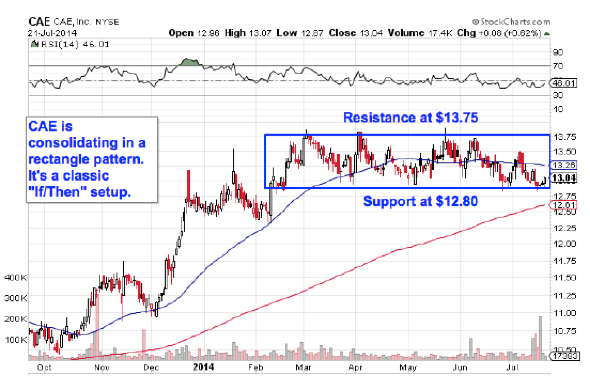
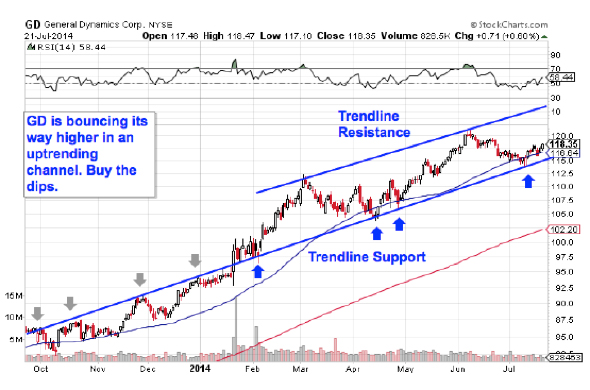
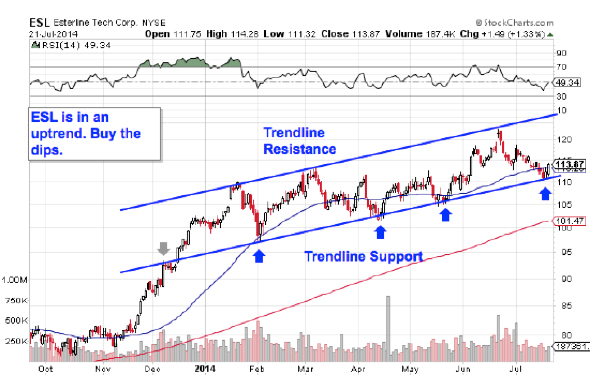
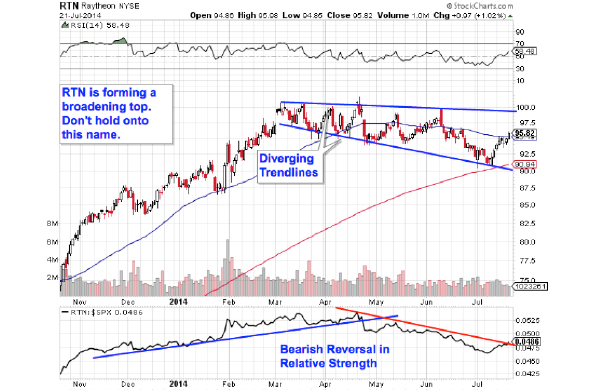
 Associated Press
Associated Press 


 Alamy While a recent survey by Citi (C) shows that nine out of 10 parents teach their kids about money and 59 percent say they talk to their kids about personal finance, there are still a few financial topics that parents prefer not to discuss. "Our survey findings showed that most parents have begun discussing finances with their children before age 13, and nearly half of respondents said that sensitive financial topics are not off-limits for conversations with their children," says Linda Descano, a personal finance expert with Citi. "However, the topics that most respondents found off-limits were 'the amount of money I make' (with 28 percent believing this was off-limits), 'the amount of savings we have' (27 percent) and 'the amount of debt we have' (26 percent)."
Alamy While a recent survey by Citi (C) shows that nine out of 10 parents teach their kids about money and 59 percent say they talk to their kids about personal finance, there are still a few financial topics that parents prefer not to discuss. "Our survey findings showed that most parents have begun discussing finances with their children before age 13, and nearly half of respondents said that sensitive financial topics are not off-limits for conversations with their children," says Linda Descano, a personal finance expert with Citi. "However, the topics that most respondents found off-limits were 'the amount of money I make' (with 28 percent believing this was off-limits), 'the amount of savings we have' (27 percent) and 'the amount of debt we have' (26 percent)."

 Popular Posts: 5 Oil Services Stocks to Play Rising SpendingBe Wary of These 3 New MLP ETFs3 Healthcare Stocks for Retirement Investors Recent Posts: Now Is the Perfect Time to Buy Refining Stocks Is the Sun Fading on ETFs? – Morning Linkfest (July 7) Happy Birthday, 'Murica … And New Stocks – Morning Linkfest (July 3) View All Posts Now Is the Perfect Time to Buy Refining Stocks
Popular Posts: 5 Oil Services Stocks to Play Rising SpendingBe Wary of These 3 New MLP ETFs3 Healthcare Stocks for Retirement Investors Recent Posts: Now Is the Perfect Time to Buy Refining Stocks Is the Sun Fading on ETFs? – Morning Linkfest (July 7) Happy Birthday, 'Murica … And New Stocks – Morning Linkfest (July 3) View All Posts Now Is the Perfect Time to Buy Refining Stocks 

 Popular Posts: 5 Stocks to Sell for JulyThe Internet of Things — 9 Stocks to Buy (At Your Own Peril)Mergers and Acquisitions — The 5 Biggest Deals of Q2 Recent Posts: 5 Stocks to Buy for July Nathan’s Famous – Stick to Nathan’s Hot Dogs, Forget NATH Stock GM Stock Rallies as Shocking Sales Gain Trumps Recall News View All Posts 5 Stocks to Buy for July
Popular Posts: 5 Stocks to Sell for JulyThe Internet of Things — 9 Stocks to Buy (At Your Own Peril)Mergers and Acquisitions — The 5 Biggest Deals of Q2 Recent Posts: 5 Stocks to Buy for July Nathan’s Famous – Stick to Nathan’s Hot Dogs, Forget NATH Stock GM Stock Rallies as Shocking Sales Gain Trumps Recall News View All Posts 5 Stocks to Buy for July  No, we’re not likely to see a repeat of that torrid performance, but this still is a seasonally solid time for the market. From 1928 to 2014, the S&P 500 generated an average monthly price gain of 1.6%, according to updated data from Yardeni Research.
No, we’re not likely to see a repeat of that torrid performance, but this still is a seasonally solid time for the market. From 1928 to 2014, the S&P 500 generated an average monthly price gain of 1.6%, according to updated data from Yardeni Research.



